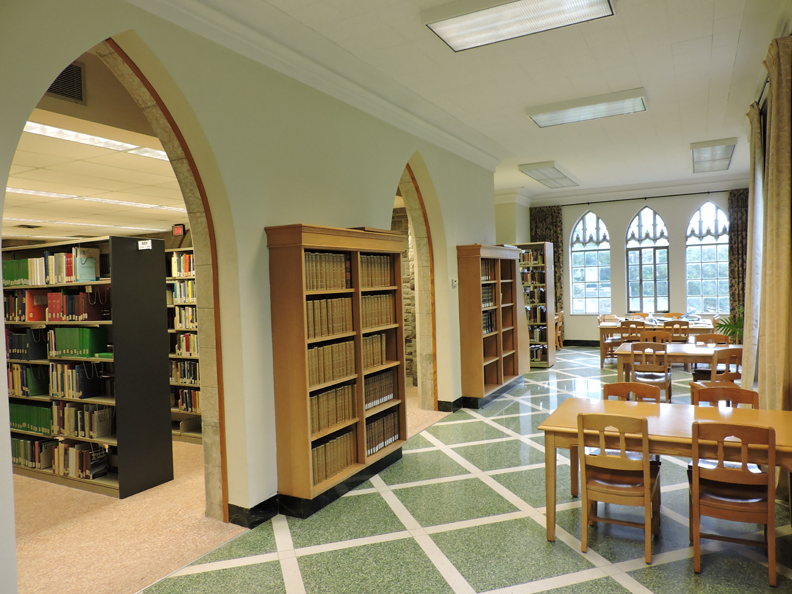Carmelite Brothers and Fathers were invited to the Archdiocese of Toronto in 1875 by Archbishop Lynch. In Niagara, they built a monastery directly above the Canadian Falls. The house served as a spiritual retreat centre and became a Carmelite seminary in 1919. In 1958, the Diocese of St. Catharines was established, separating the Niagara peninsula and the Carmelites from the Archdiocese of Toronto. However, Carmelite fathers were later invited by Archbishop Pocock back to the archdiocese to serve as pastors in Mississauga and Barrie parishes. The Mount Carmel Spiritual Centre in Niagara Falls continues to offer facilities for retreats and conferences.
 |
| Photograph courtesy of Wanita Bates, 2014
The original Carmelite monastery and seminary in Niagara Falls is now called the Mount Carmel Spiritual Centre. It offers facilities, accomodations and services for retreats and conferences. The 2014 Catholic Archivist Group conference was held here.
|
Female branches of the ancient Order of Carmel have also served Toronto. After petitioning Archbishop Neil McNeil, the Carmelite Sisters of the Divine Heart of Jesus were invited to establish an orphanage and minister to Polish and Italian immigrants in the city. Upon their arrival in 1913, the archbishop drove the nuns around house hunting in his own carriage, until they decided on a place on Ossington Ave.*
In 1967, another female Order, the Carmelite Missionary Sisters of St. Theresa of the Child Jesus came to Toronto. They continue to run the Carmelite Day Nursery.
*Archdiocese of Toronto. Walking the Less Travelled Road: A History of the Religious Communities with the Archdiocese of Toronto 1841-1991 (Toronto: Mission Press, 1993), pp. 15-20.






























